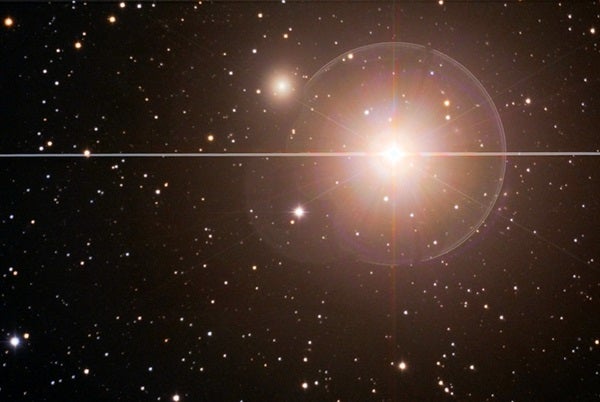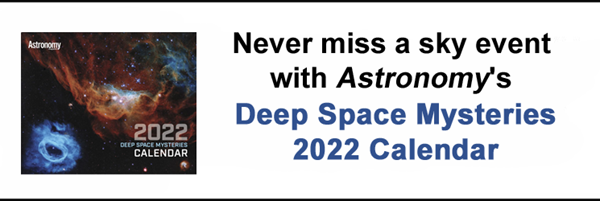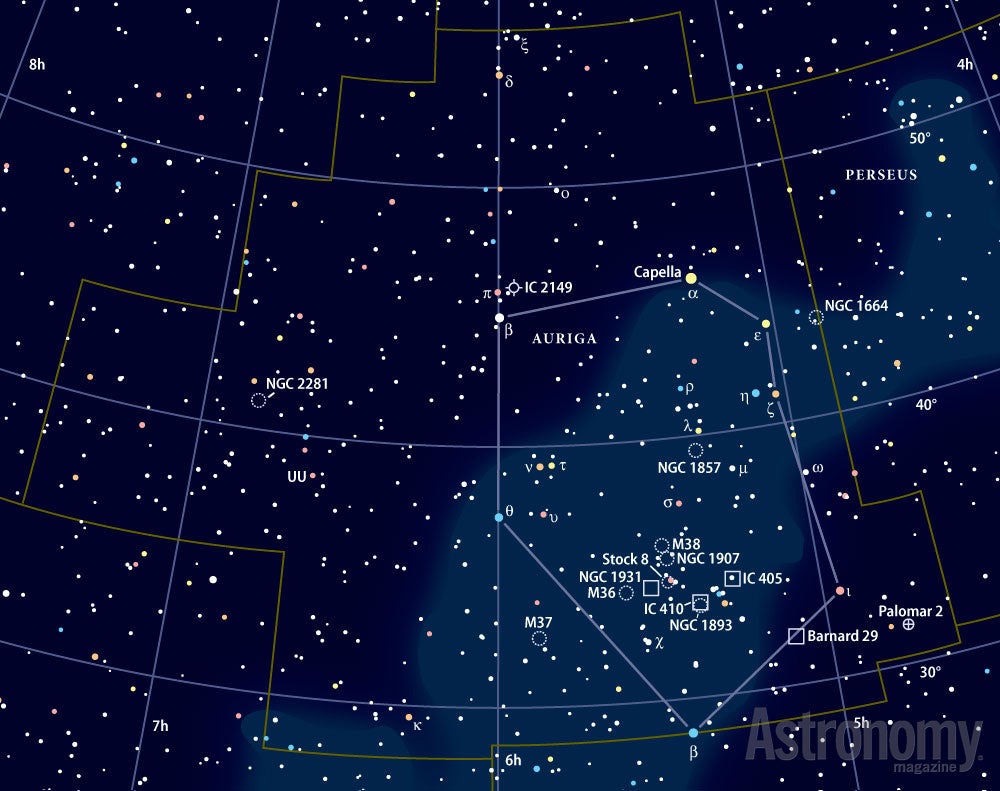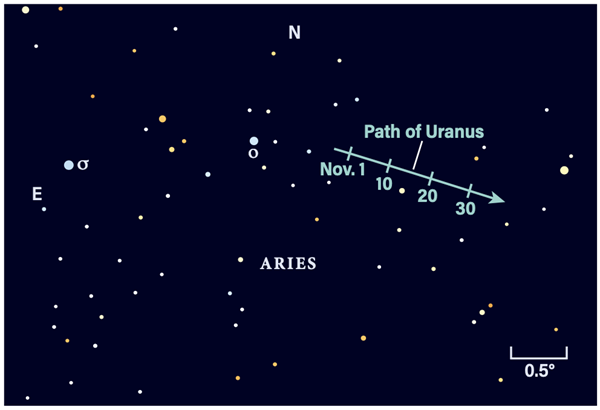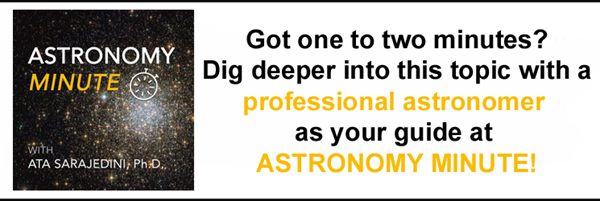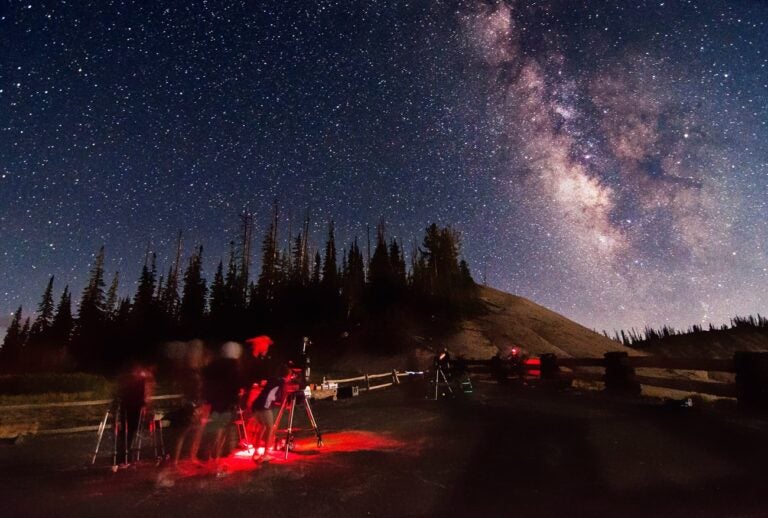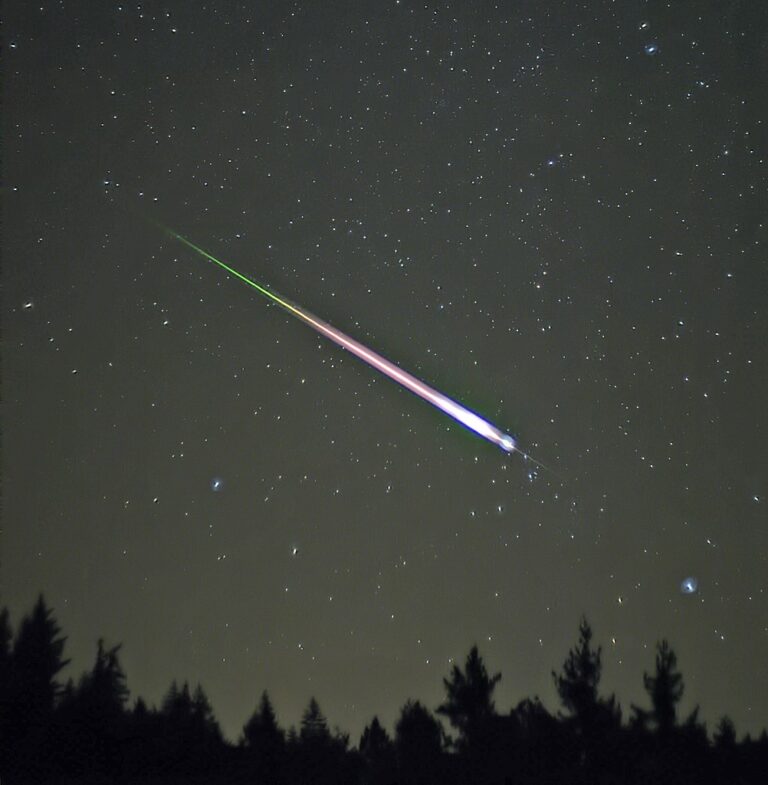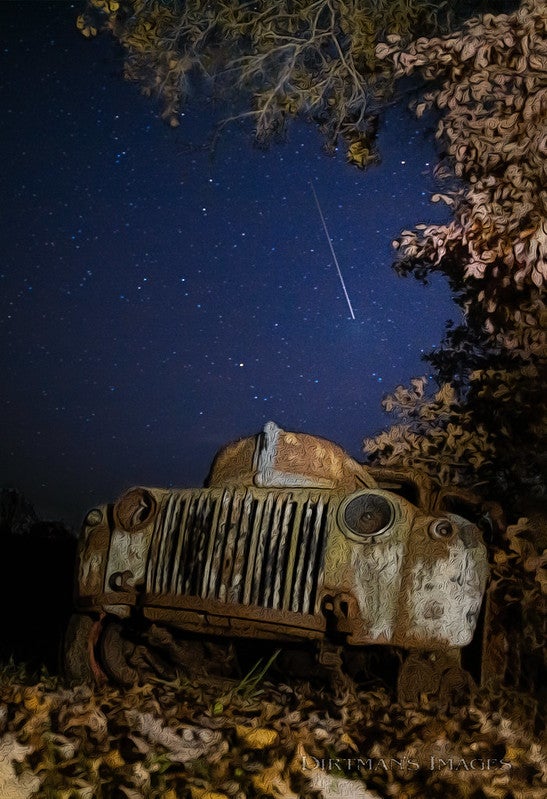Friday, October 29
Venus reaches greatest eastern elongation (47°) from the Sun at 5 P.M. EDT. You’ll find the planet high in the southwestern sky after the Sun sets, blazing a bright magnitude –4.5.
Through a telescope, Venus spans 25″ and still appears half-lit, having reached dichotomy (when it is exactly 50 percent lit) last week. As we move into November, the planet will remain bright, growing in angular size but shrinking in phase, appearing more crescentlike as the days go by.
Farther east along the ecliptic from Venus is Saturn, which sits 43.5° east of the brilliant planet and glows a much more muted magnitude 0.5. Still, Saturn is stunning through a telescope, showing off its famous ring system, which appears nearly 39″ end to end.
Finally, 15.4° east of Saturn is magnitude –2.5 Jupiter. The solar system’s biggest planet, Jupiter currently appears 42″ across. Its large face features several alternating cloud bands and storms, including its Great Red Spot. Although the spot won’t transit tonight, the Earth-sized storm will cross the face of Jupiter while the planet is easily visible tomorrow, reaching a midpoint halfway across the planet shortly before 9 P.M. EDT.
Sunrise: 7:26 A.M.
Sunset: 6:01 P.M.
Moonrise: 12:05 A.M.
Moonset: 3:07 P.M.
Moon Phase: Waning crescent (41%)
*Times for sunrise, sunset, moonrise, and moonset are given in local time from 40° N 90° W. The Moon’s illumination is given at 12 P.M. local time from the same location.
Saturday, October 30
It’s almost time for Halloween! Start off your spooky weekend by checking a few targets off Astronomy columnist Stephen James O’Meara’s Ghost Hunt Challenge list. (You can download a PDF with observing details on these 109 objects here.)
This weekend, the Moon is a waning crescent, meaning the evening skies are dark and Moon-free — perfect for some of these scary deep-sky objects. Let’s kick off the holiday weekend in Pisces with M74, also known as the Phantom Galaxy. You’ll find it pretty easily — just look 1.3° east of magnitude 3.6 Eta (η) Piscium, and you’re there!
M74 is a face-on spiral galaxy with a low surface brightness, which is likely why it’s dubbed a phantom. Still, it’s magnitude 8.5 — bright enough for large binoculars or a small telescope to pick up, even if your eyes make take a while to spot it. This galaxy stretches about 10.5′ by 9.5′ across, with a small, bright nucleus and fainter spiral arms. See if you can spot this ghostly galaxy, and come back tomorrow for more challenge targets!
Sunrise: 7:27 A.M.
Sunset: 6:00 P.M.
Moonrise: 1:11 A.M.
Moonset: 3:38 P.M.
Moon Phase: Waning crescent (32%)
Sunday, October 31
Happy Halloween! Let’s continue our Ghost Hunt Challenge tonight with a strange sight: Mirach’s Ghost, the galaxy NGC 404.
Mirach is a bright 2nd-magnitude star in Andromeda. It’s already visibly by sunset and climbs higher in the sky as the evening progresses. Turn your telescope on this star, however, and you’ll get a surprise: a “ghostly” image less than 7′ northwest of the bright star.
Thanks to its size and position, this tiny galaxy, which lies some 10 million light-years away, appears like an afterimage or lens flare effect of the bright foreground star, which is a mere 200 light-years away, well within our solar neighborhood. Like the star, this galaxy appears orange or red in color, largely because it’s filled with aging, cooler stars.
Closer to home, asteroid 2 Pallas is stationary in the constellation Aquarius at 10 P.M. EDT.
Also at 10 P.M. EDT, Mercury passes 4° north of the bright star Spica. However, they are not visible then. Instead, wait until early tomorrow morning before dawn. About half an hour before sunrise on November 1st, the pair is 8° high in the east and roughly the same distance (now 4.2°) apart.
Sunrise: 7:29 A.M.
Sunset: 5:58 P.M.
Moonrise: 2:18 A.M.
Moonset: 4:07 P.M.
Moon Phase: Waning crescent (22%)
Monday, November 1
The American Association of Variable Star Observers is an amateur organization dedicated to observing celestial objects whose brightness changes over time. This year, they’re highlighting a different star each month, and November’s featured variable star is Almaaz, also known as Epsilon (ϵ) Aurigae.
Almaaz is a 3rd-magnitude star located a little less than 3.5° southwest of easy-to-spot Capella. The pair will rise around 5:30 P.M. local time tonight roughly even with each other, with Capella on the left and Almaaz on the right. Wait a little while for them to get higher, then turn your focus to Almaaz, which is part of a small asterism called The Kids. Together with Haedus I (Zeta [ζ] Aur), and Haedus II (Eta Aur), these three stars form a tall, thin triangle south-southwest of Capella.
Almaaz itself is a rare, hot, F-type supergiant star that is also in a binary eclipsing system. That means it has a partner star that crosses in front of it every 27 years — and each eclipse lasts for 2 years! When eclipsed, Almaaz appears roughly the same brightness as Haedus I (magnitude 3.7); when uneclipsed, it is magnitude 3. The last eclipse occurred between 2009 and 2011, so Almaaz is currently uneclipsed and at its brightest. Compare it to Haedus I 2.8° to its south to see the difference.
Sunrise: 7:30 A.M.
Sunset: 5:57 P.M.
Moonrise: 3:27 A.M.
Moonset: 4:33 P.M.
Moon Phase: Waning crescent (14%)
Tuesday, November 2
Taurus the Bull is now rising in the evening, and he’s got his eye — literally — on a visitor from the asteroid belt. Dwarf planet 1 Ceres skims a mere 7′ due south of the bright star Aldebaran tonight and tomorrow morning.
By midevening, Aldebaran is already 15° high in the east. This red giant star glows a bright magnitude 0.9 and is easy to find east-southeast of the famous Pleiades star cluster (M45). Ceres is magnitude 7.7 — much dimmer, of course, but still brighter than any other of the faint stars within 20′ of Aldebaran. You can catch the pair with binoculars or a telescope, although the former might be more difficult from an urban, light-polluted sky.
The largest body in the main belt, Ceres has been promoted from asteroid to dwarf planet. Just a bit less than 600 miles (965 kilometers) across, it was first spotted in 1801 by Giuseppe Piazzi. This relatively nearby icy world was visited in 2015 by NASA’s Dawn spacecraft, which spent the next three years in orbit, until the depletion of the craft’s fuel brought the mission to an end.
Sunrise: 7:31 A.M.
Sunset: 5:56 P.M.
Moonrise: 4:37 A.M.
Moonset: 5:00 P.M.
Moon Phase: Waning crescent (7%)
Wednesday, November 3
The thin crescent Moon hangs close to Mercury in Virgo this morning; see if you can catch the sight before the Sun comes up.
But the pair has more in store for us today: Our satellite passes in front of the planet Mercury in an occultation that can be seen during daylight hours from the eastern half of the U.S. and Canada. The exact moment the occultation occurs depends on your location, such as at 2:38 P.M. CST in Chicago and an hour earlier, 1:38 CST, in Kansas City, Missouri.
If you’re planning to watch the event, take extreme care — the pair will be only 15° from the Sun. If possible, try to observe from a location where the Sun will be blocked, such as by foliage or buildings. Make sure your telescope is well aligned and calibrated before you go searching out the sight and if you are particularly inexperienced, avoid trying to find it yourself — instead get help or visit a local club with experienced members.
The Moon later passes 1.2° due north of Mercury at 3 P.M. EDT.
Sunrise: 7:32 A.M.
Sunset: 5:55 P.M.
Moonrise: 5:51 A.M.
Moonset: 5:28 P.M.
Moon Phase: Waning crescent (2%)
Thursday, November 4
New Moon occurs at 5:15 P.M. EDT, leaving us with a moonless sky this evening — perfect for viewing the distant planet Uranus, which reaches opposition at 8 P.M. EDT.
The ice giant is currently located in Aries, some 18° southwest of the Pleiades and visible all night long. The best time to view it is late in the evening, near midnight, when it’s highest in the sky and above the thicker, more turbulent air near the horizon. Uranus’ disk spans 4″, which is tiny, to be sure — but take into consideration its distance, which is now 1.75 billion miles (2.8 billion km) from Earth.
To find Uranus’ magnitude 5.7 glow tonight, look first for Omicron (ο) Arietis, a star of the same magnitude. If you need a little help finding this faint star, use brighter magnitude 4.3 Mu (μ) Ceti, which lies 5° due north of Omicron Ari. Uranus appears as a “flat” blue-green star less than 1° west of Omicron. Some observers with dark skies will spot the planet without any optical aid, but binoculars or a telescope will boost your vision in more light-polluted areas or earlier in the evening.
Sunrise: 7:33 A.M.
Sunset: 5:54 P.M.
Moonrise: 7:06 A.M.
Moonset: 5:59 P.M.
Moon Phase: New
Friday, November 5
The Moon reaches perigee, the closest point to Earth in its orbit around our planet, at 6:18 P.M. EDT. It will then sit 222,975 miles (358,843 km) away. Today it’s just a tiny sliver of a crescent, but it will quickly grow brighter and fatter each day.
Take advantage of this dark Moon window tonight to start looking for sporadic meteors, which grace the sky outside of any predicted meteor shower. Because they are sporadic and don’t come from a particular direction, spotting these meteors means finding a dark location and scanning the whole sky slowly over time. At this time of year, you can expect about 8 to 10 sporadic meteors per hour, but this is just an average.
In fact, the Leonid meteor shower begins ramping up starting tomorrow and peaks midmonth, so you may see just a few more “sporadic” shooting stars than expected as Earth slowly starts to enter the trail of debris left behind by the shower’s parent body, Comet 55P/Swift-Tuttle.
Sunrise: 7:34 A.M.
Sunset: 5:53 P.M.
Moonrise: 8:25 A.M.
Moonset: 6:35 P.M.
Moon Phase: Waxing crescent (1%)

